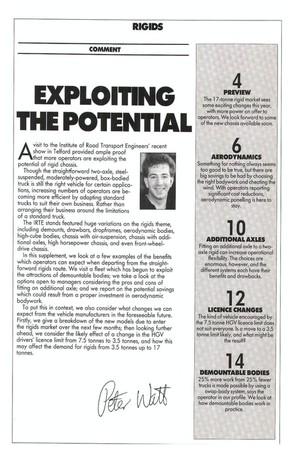EXPLOITING THE POTENTIAL Though the straightforward two-axle, steelsuspended, moderately-powered, box-bodied
Page 45

If you've noticed an error in this article please click here to report it so we can fix it.
truck is still the right vehicle for certain applications, increasing numbers of operators are becoming more efficient by adapting standard trucks to suit their own business. Rather than arranging their business around the limitations of a standard truck.
The IRTE stands featured huge variations on the rigids theme, including demounts, drawbars, dropframes, aerodynamic bodies, high-cube bodies, chassis with air-suspension, chassis with additional axles, high horsepower chassis, and even front-wheeldrive chassis.
In this supplement, we look at a few examples of the benefits which operators can expect when departing from the straightforward rigids route. We visit a fleet which has begun to exploit the attractions of demountable bodies; we take a look at the options open to managers considering the pros and cons of fitting an additional axle; and we report on the potential savings which could result from a proper investment in aerodynamic bodywork.
To put this in context, we also consider what changes we can expect from the vehicle manufacturers in the foreseeable future. Firstly, we give a breakdown of the new models due to enter the rigids market over the next few months; then looking further ahead, we consider the likely effect of a change in the HGV drivers' licence limit from 7.5 tonnes to 3.5 tonnes, and how this may affect the demand for rigids from 3.5 tonnes up to 17 tonnes.




































































































